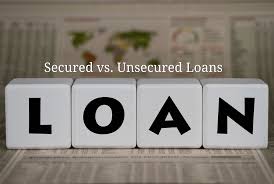When considering an online loan in Australia, the advertised interest rate is often the first thing borrowers notice. However, to truly understand the cost of borrowing, it’s crucial to look beyond this figure and delve into the various online loan fees that can significantly impact the total repayment amount. Being aware of these charges upfront allows you to make an informed decision, compare offers effectively, and avoid unexpected financial burdens. This guide breaks down the common fees associated with online loans in Australia and explains how they affect your overall borrowing cost.
Understanding the True Cost: Interest Rate vs. Comparison Rate
Before diving into specific fees, it’s essential to grasp the difference between the nominal interest rate and the comparison rate.
- Interest Rate: This is the percentage charged on the principal loan amount, typically expressed as an annual percentage. It represents the cost of borrowing the money itself.
- Comparison Rate: This is the most important figure for comparing loan offers in Australia. By law, lenders must display a comparison rate, which includes the interest rate plus most of the fees and charges associated with the loan. It provides a more accurate representation of the total annual cost of the loan, allowing for a true “apples-to-apples” comparison between different loan products and lenders. Always use the comparison rate to assess affordability.
Common Online Loan Fees in Australia
Online loans can come with various fees, depending on the lender and the specific loan product (e.g., small amount credit contract vs. larger personal loan). Here are the most common ones:

1. Establishment Fee (Origination Fee)
- What it is: This is a one-time, upfront fee charged by the lender to cover the costs of processing your loan application, setting up the account, and disbursing the funds.
- When it’s charged: It’s typically added to your loan principal or deducted from the loan amount before the funds are disbursed to you.
- Typical amounts: For Small Amount Credit Contracts (SACCs) (loans up to $2,000 repaid over 16 days to 1 year), ASIC caps this fee at 20% of the principal loan amount. For larger personal loans (Medium Amount Credit Contracts or unsecured personal loans), it can be a flat fee (e.g., $150-$600) or a percentage of the loan amount, varying by lender.
2. Monthly Service Fee (Ongoing Fee)
- What it is: This is a recurring fee charged by the lender for the ongoing administration and maintenance of your loan account. It’s usually a fixed amount charged each month or repayment cycle.
- When it’s charged: It’s included in your regular repayments throughout the loan term.
- Typical amounts: For SACCs, ASIC caps this fee at 4% of the principal loan amount per month. For larger personal loans, it might be a smaller fixed monthly amount (e.g., $10-$30) or might not apply if the interest rate is inclusive of such costs.
3. Late Payment Fee (Default Fee)
- What it is: This fee is charged when you fail to make a scheduled loan repayment on time. It’s a penalty for defaulting on your repayment obligation.
- When it’s charged: Applied each time a payment is missed or is late beyond a specified grace period.
- Typical amounts: Can vary significantly but usually ranges from $15 to $35 per missed payment. Some lenders may also charge daily interest on the overdue amount. This fee, along with the negative impact on your credit score, highlights the importance of timely repayments.
4. Dishonour Fee (Failed Payment Fee)
- What it is: This fee is charged if a scheduled direct debit repayment from your bank account fails due to insufficient funds (or if you cancel the direct debit without prior arrangement).
- When it’s charged: When a direct debit attempt is rejected by your bank.
- Typical amounts: Often similar to late payment fees, ranging from $10 to $30. Your own bank might also charge you a separate dishonour fee for the failed transaction.
5. Early Repayment Fee (Break Fee)
- What it is: This fee is charged by some lenders if you choose to pay off your loan in full before the agreed-upon loan term ends. It compensates the lender for the interest they would have earned if the loan had run its full course.
- When it’s charged: At the point of making an early, full repayment.
- Typical amounts: Can be a fixed amount or calculated based on the remaining interest or loan term. Many reputable online lenders in Australia for unsecured personal loans do NOT charge early repayment fees, making them a more flexible option. Always check this clause in your loan contract if you anticipate paying off your loan early.
6. Statement Fees / Document Fees
- What it is: Less common now due to digital processes, but some lenders may charge a small fee for providing paper statements or duplicate documents.
- When it’s charged: Upon request for physical documents.
- Typical amounts: Usually minimal, e.g., $5-$10 per document.
Why Understanding Fees is Crucial for Online Loans
- Accurate Cost Assessment: Fees, especially establishment and monthly service fees, can add a significant percentage to the total cost of your loan, even with a seemingly low interest rate. The comparison rate accounts for most of these, giving you the true picture.
- Avoid Surprises: Knowing all potential fees upfront prevents unexpected charges that can disrupt your budget.
- Effective Comparison: When comparing different online loan offers, looking solely at the interest rate is misleading. A loan with a slightly higher interest rate but no fees might be cheaper than one with a lower interest rate burdened by multiple charges. Always compare the comparison rates.
- Budgeting Accuracy: Factoring in all fees helps you create a more accurate repayment budget, ensuring you can comfortably meet all your obligations.
Tips for Managing Online Loan Fees
- Prioritize the Comparison Rate: This is your best friend when comparing online loans. It’s the most reliable indicator of the total annual cost.
- Read the Fine Print: Always read the entire loan contract carefully before signing. All fees and charges must be disclosed here.
- Ask Questions: If any fee or charge is unclear, contact the lender’s customer service for clarification before you commit.
- Confirm No Hidden Fees: Reputable, ASIC-licensed lenders will be transparent. Be wary of any lender that seems evasive about their fee structure.
- Set Up Repayment Reminders: To avoid late payment and dishonour fees, set up automatic direct debits and ensure you have sufficient funds in your account on the due date.
- Seek Hardship Assistance: If you face genuine financial difficulty, contact your lender immediately. They have obligations under Australian law to consider hardship variations, which can help you avoid escalating fees and negative credit reporting.
Conclusion
While online loans in Australia offer unparalleled convenience and speed, being aware of the associated online loan fees is crucial for responsible borrowing. From establishment and monthly service fees to penalties for late or dishonoured payments, these charges significantly impact the overall cost of your loan. By focusing on the comparison rate, meticulously reviewing your loan contract, and understanding all potential charges, you can confidently choose a transparent and affordable online loan that meets your needs without unwelcome financial surprises. Always prioritize clarity and verify the lender’s legitimacy to ensure a safe borrowing experience.













